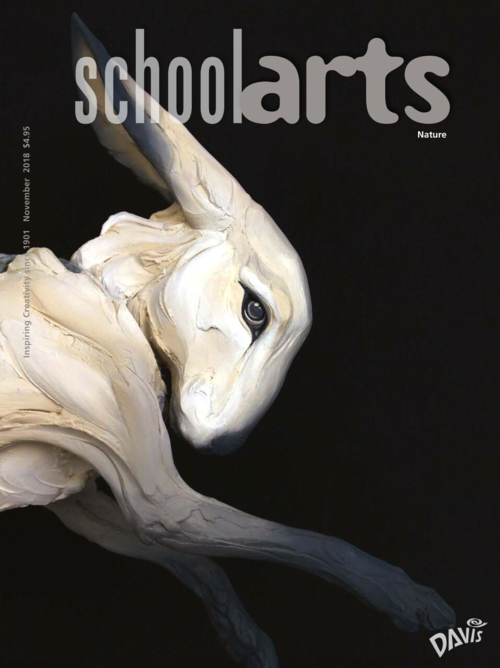 To teach my high-school students how to use these new tools to create self-directed work, I designed a four-part challenge with a small reward for the group that finishes first. Students work in groups to finish each of the tasks I assign, using only cardboard, tape, cutters, and hot glue.
To teach my high-school students how to use these new tools to create self-directed work, I designed a four-part challenge with a small reward for the group that finishes first. Students work in groups to finish each of the tasks I assign, using only cardboard, tape, cutters, and hot glue.
TASK 1: Create a Sphere by Stacking
In this task, each group needs to figure out a way to cut and assemble concentric circles that increase in size inward from the outer edges, making a round form that is solid. This task requires the most cutting, which is less enjoyable for some learners. It’s a good experience because there are lots of cardboard sculptors who create beautiful work with this construction method, and it helps students to understand the time such work requires.
TASK 2: Form a Cube by Cutting Six Faces
For this task, groups investigate connecting edges at ninety-degree angles. I instruct students to reinforce pieces that meet at a corner for strength and encourage them to problem-solve other ways to add strength in their construction.
TASK 3: Make a Cylinder by Bending
This task focuses on bending cardboard by making cuts that go through only the first layer. Creating a cylinder provides a great opportunity for students to experience how to transform this stiff, flat material into something round.
TASK 4: Make a Rectangular Pyramid by Folding
This task involves cutting and attaching individual pieces as done in Task 2, but this method is much more elegant. Groups must figure out how to create a template that can be folded into the required shape after cutting through the first layer of cardboard. It takes planning and precise measurement, but the results are worth it.
Practical Knowledge
Educational magic happens as students work in teams to respond to the challenge. The motivation of a reward for finishing first results in focus and increased engagement, and groups plan with purpose. Tasks are divided and the content is discussed, resulting in deeper understanding for all. As the groups work through the four tasks, they develop a range of practical knowledge that will help them process the inspirational examples I’ll show them next, making it easy for them to understand how the work of others is made and plan for their own art-making.
Melissa Purtee is an art teacher at Apex High School in Apex, North Carolina, and co-author of The Open Art Room, available now from Davis Publications.
View this article in the digital edition.


 To teach my high-school students how to use these new tools to create self-directed work, I designed a four-part challenge with a small reward for the group that finishes first. Students work in groups to finish each of the tasks I assign, using only cardboard, tape, cutters, and hot glue.
To teach my high-school students how to use these new tools to create self-directed work, I designed a four-part challenge with a small reward for the group that finishes first. Students work in groups to finish each of the tasks I assign, using only cardboard, tape, cutters, and hot glue.